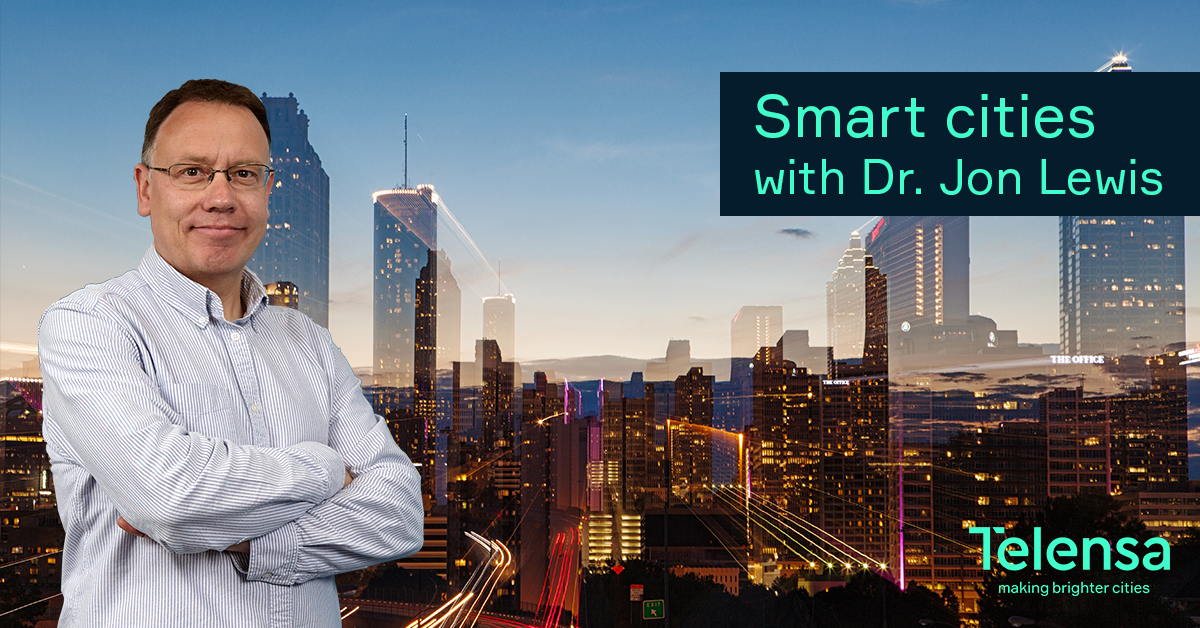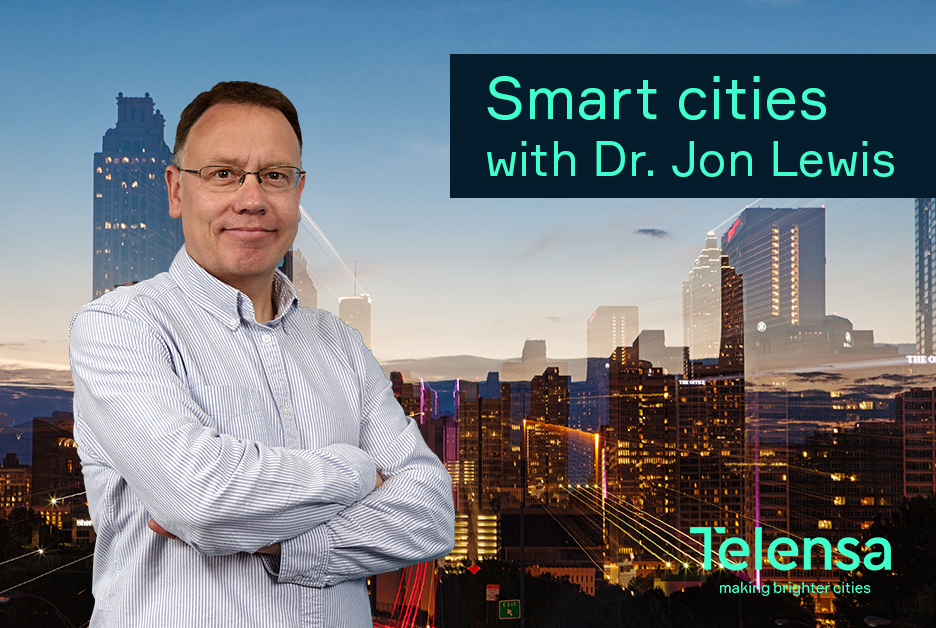

Dr Jon Lewis is our Chief Strategy Officer. His background spans technology innovation and product delivery across a wide set of industries from mobile communications to healthcare. At Telensa Jon has pioneered several smart city applications, including smart parking and smart waste management. More recently he has led the Urban Data Project - a new approach to the collection and responsible use of data by cities, transforming trust and privacy using artificial intelligence and machine learning.
What is a smart city?
I think the term smart city has been misused, it tends to be discussed as ‘just one thing’ - if you digitise your city and deploy sensors then suddenly you become smart. In reality there isn’t one recipe for a smart city. People have tried to create the recipe by testing how smart a city is compared to maturity indexes and other criteria such as: how many sensors you have, how much energy is saved, the presence of a common data infrastructure. But, in truth there is no such thing as a smart city but a constant evolution towards smarter cities.
How have smart cities evolved?
You can now apply digitisation to pretty much everything a city does, be it street lighting, transport, traffic flow, bins etc. We have seen many cities digitise their operations this way to improve efficiency. For example, placing sensors on bins helps to ensure they’re being emptied only when full. But over the past five or six years we have seen significant change with digitisation. Cities are now able to gain much more insight from the physical environment, that is much broader than monitoring individual points like bins. Three things have accelerated the move towards us gaining a complete view of what's happening in a city:
- Cities have gone through the process of employing IT departments and are now at the stage where their systems are getting mature enough that they can start creating a common infrastructure, eradicating silos.
- Following the emergence of the internet, companies and cities have been increasingly exploiting the digital domain rather than the physical domain to improve city operations. Over time this has commoditised sensing devices and communications to the point where you can instrument the physical environment at relatively low cost.
- Artificial intelligence has been around for 50 years, but in the last five years it’s really started to take-off for two reasons:
- Processing power is getting close to the power of the human brain, so you’re able to do things on computers in real-time that previously took years to process
- The move to cloud processing and cloud storage makes it possible to reduce data costs and achieve scalability
Cities are moving towards a phase where they can instrument the whole environment and the more they understand in the virtual world, the more they can start to understand what would happen in the physical world. Creating this digital twin doesn’t come without challenges, look out for my blog series to learn more about approach, privacy and trust. Sign up for notifications here:
Topics: Smart cities, IoT, AI

